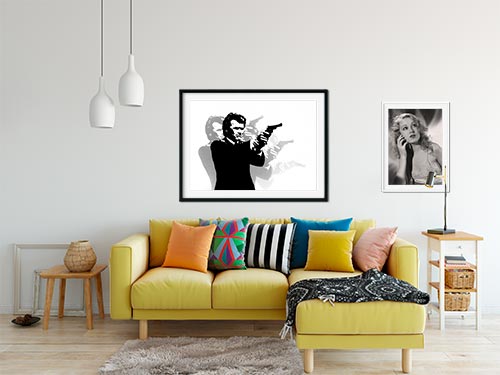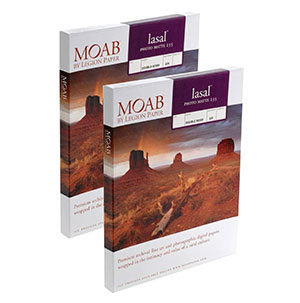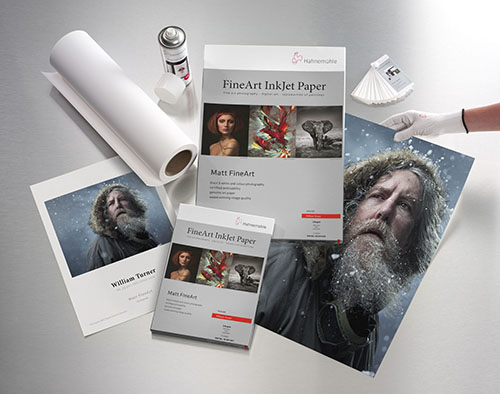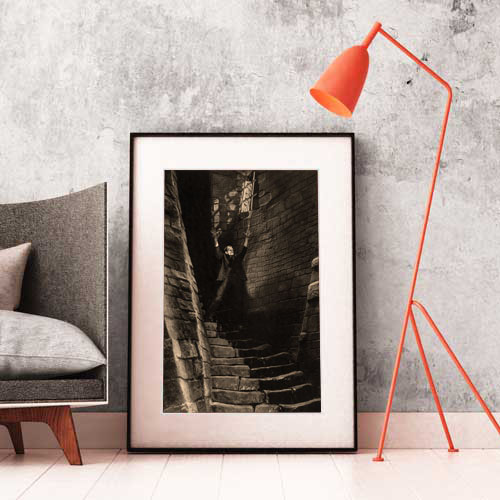Rare studio publicity shot featuring Hammer Film Productions Personnel receiving the Queen's Award to Industry. Executives, directors, production heads, staff and guests, pose together for publicity photos with Peter Cushing and Christopher Lee, outside the Green Room at Pinewood Studios on Wed, May 29th, 1968.
In the back row, Christopher Lee stands next to Brian Lawrence. Also in the back are James Carreras and Freddie Francis. Arthur Banks holds the Queen's Award in the front row standing. To his left is Anthony Hinds. Behind his right shoulder is Terence Fisher. Behind Fisher's right shoulder is Roy Skeggs. Sitting in the front row left are Anthony Nelson Keys and Peter Cushing.
Dracula Has Risen from the Grave is a 1968 British supernatural horror film directed by Freddie Francis and produced by Hammer Film Productions. It is the fourth entry in Hammer's Dracula series, and the third to feature Christopher Lee as Count Dracula, the titular vampire. The film stars Rupert Davies as a clergyman who exorcises Dracula's castle, and in doing so, unwittingly resurrects the Count back from the dead. Dracula Has Risen from the Grave also stars Veronica Carlson. It was followed by Taste the Blood of Dracula in 1970. Audiences in both Britain and the U.S. applauded the movie, which became Hammer's highest-grossing film.
This Hammer Dracula production was shot at Pinewood Studios situated in Iver Heath, Buckinghamshire. Missing are the approach road, coach path and moat seen in front of Castle Dracula in Dracula (1958) and Dracula: Prince of Darkness (1966). Those films were made at Bray Studios. Longtime Hammer director Terence Fisher was originally scheduled to direct ‘’Dracula Has Risen from the Grave’’ but broke his leg in a traffic related accident. Freddie Francis was tapped as his replacement.
This film marked the third entry in the company’s Dracula series and the first not to be directed by Fisher. The film was photographed by Arthur Grant using colored filters belonging to director Freddie Francis, also a cameraman, who used them when photographing The Innocents (1961). Whenever Dracula (or his castle) is in a scene, the frame edges are tinged crimson, amber and yellow. The Monthly Film Bulletin of the UK was very positive, writing that the film was "rather short on shock sequences" but had "a nice gory opening" and "a suitably horrific finale." Audiences in both Britain and the U.S. applauded the movie, which became Hammer's highest-grossing film.
Product Enquiry
Kodak Professional Endura Paper
Kodak Endura papers provide an incredible amount of detail and smooth transition of tones. Designed for the professional photographer in mind, looking for a more traditional photo print style, Kodak Endura provides an extended print life and color gamut almost at the level of a high end fine art paper print.
Archival Matte Paper
Archival Matte Paper, also known as Moab Lasal Photo Matte, is our house stock fine art paper and is an economical favorite for fine art reproductions and photo prints. It features a smooth surface, heavy weight (230 g, 9.5-mil), neutral white, matte paper engineered for accurate color reproduction that provides high contrast and high-resolution output. This paper is acid-free, making it the perfect choice for both photography & fine art reproductions.
Giclee William Turner Paper by Hahnemühle
The William Turner by Hahnemühle is one of the most popular papers used in the Giclee printing industry. This is a 310g natural white mould made natural line paper with 100% rag content making it highly archival. It has a slight coarse texture which gives photos and artwork an elegant look. These fine art paper prints (also known as Giclee) are ordered by galleries, individual artists and photographers. The papers and inks are not only archival but use some of the most accurate print technology for full color prints.
- Giclee prints use very expensive archival pigmented inks.
- Highest level of color gamut available in printing (12 color printing).
- Exceptional black & white printing.
- Fade resistant, pigmented inks which provide a superior color range compared to other types of inks. Widely preferred in fine art and photography circles.
- We ONLY use professional grade fine art and photo paper that resist yellowing and aging.



Framing
We offer wood and metal frames, custom cut & joined to order. Each framed print includes hanging hardware and foamcore backer.
Matting
We use conservation grade 100% virgin alpha-cellulose 2 ply mats with white core. Acid-free and lignin-free, these are both face resistant and meet all conservation quality standards set by the Fine Art Trade Guild. Mats are digitally cut for ultimate precision. The window will be 1/8″ smaller than the print dimensions.
Glazing (Acrylic Glass)
We offer custom cut panes of shatter-proof, acrylic glass, to protect your valuable artwork and prints.
Premium Clear
Framing grade clear acrylic is shatter resistant and lightweight.
Reflection Control
With its matte finish, Tru Vue Reflection Control® Acrylic scatters light to diminish unwanted glare.
Conservation Clear
Tru Vue Conservation Clear® Acrylic is a framing industry staple, blocking up to 99% of UV rays for ultimate protection.
Conservation Reflection Control
Tru Vue Conservation Reflection Control® Acrylic scatters and diffuses light to reduce unwanted glare. Blocks up to 99% of UV rays.







